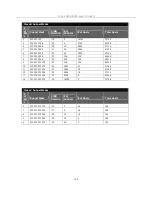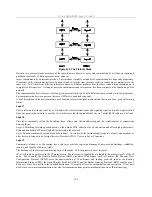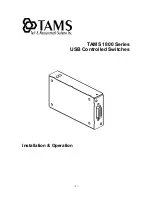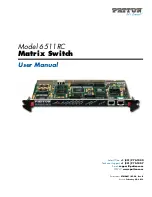
D-Link DES-3326S Layer 3 Switch
Appendix C
IP Routing, Multicasting, Multicast Routing and
Routing Protocols
IP handles the task of determining how packets will get from their source to their destination. This process is referred to as
routing.
For IP to work, the local system must be attached to a network. It is safe to assume that any system on this network can send
packets to any other system, but when packets must cross other networks to reach a destination on a remote network, these
packets must be handled by gateways (also called routers).
Gateways connect a network with one or more other networks. Gateways can be a computer with two network interfaces or
a specialized device with multiple network interfaces. The device is designed to forward packets from one network to
another.
IP routing is based on the network address of the destination IP address. Each computer has a table of network addresses.
For each network address, a corresponding gateway is listed. This is the gateway to use to communicate with that network.
The gateway does not have to be directly connected to the remote network, it simply needs to be the first place to go on the
way to the remote network.
Before a local computer sends a packet, it first determines whether the destination address is on the local network. If it is,
the packet can be sent directly to the remote device. If it is not, the local computer looks for the network address of the
destination and the corresponding gateway address. The packet is then sent to the gateway leading to the remote network.
There is often only one gateway on a network.
A single gateway is usually defined as a default gateway, if that gateway connects the local network to a backbone network
or to the Internet. This default gateway is also used whenever no specific route is found for a packet, or when there are
several gateways on a network.
Local computers can use default gateways, but the gateways themselves need a more complete routing table to be able to
forward packets correctly. A protocol is required for the gateways to be able to communicate between themselves and to
keep their routing tables updated.
Packet Fragmentation and Reassembly
TCP/IP can be used with many different types of networks, but not all network types can handle the same length packets.
When IP is transmitting large files, large packets are much more efficient than small ones. It is preferable to use the largest
possible packet size, but still be able to cross networks that require smaller packets.
To do this, IP can ‘negotiate’ packet size between the local and remote ends of a connection. When an IP connection is first
made, the IPs at both ends of the connection state the largest packet they can handle. The smaller of the two is selected.
When a IP connection crosses multiple networks, it is possible that one of the intermediate networks has a smaller packet
size limit than the local or remote network. IP is not able to determine the maximum packet size across all of the networks
that may make up the route for a connection. IP has, therefore, a method to divide packets into multiple, smaller packets to
cross such networks. This division of large packets into smaller packets is referred to as fragmentation.
A field in the TCP header indicates that a packet has been fragmented, and other information aids in the reassembly of the
packets into the original data.
Gateways that connect networks of different packet size limits split the large packets into smaller ones and forward the
smaller packets on their attached networks.
201
Содержание DES-3326SRM
Страница 1: ...D Link DES 3326S 24 Port Layer 3 Stackable Switch Manual May 2005 651ES3326S055...
Страница 242: ......
















































